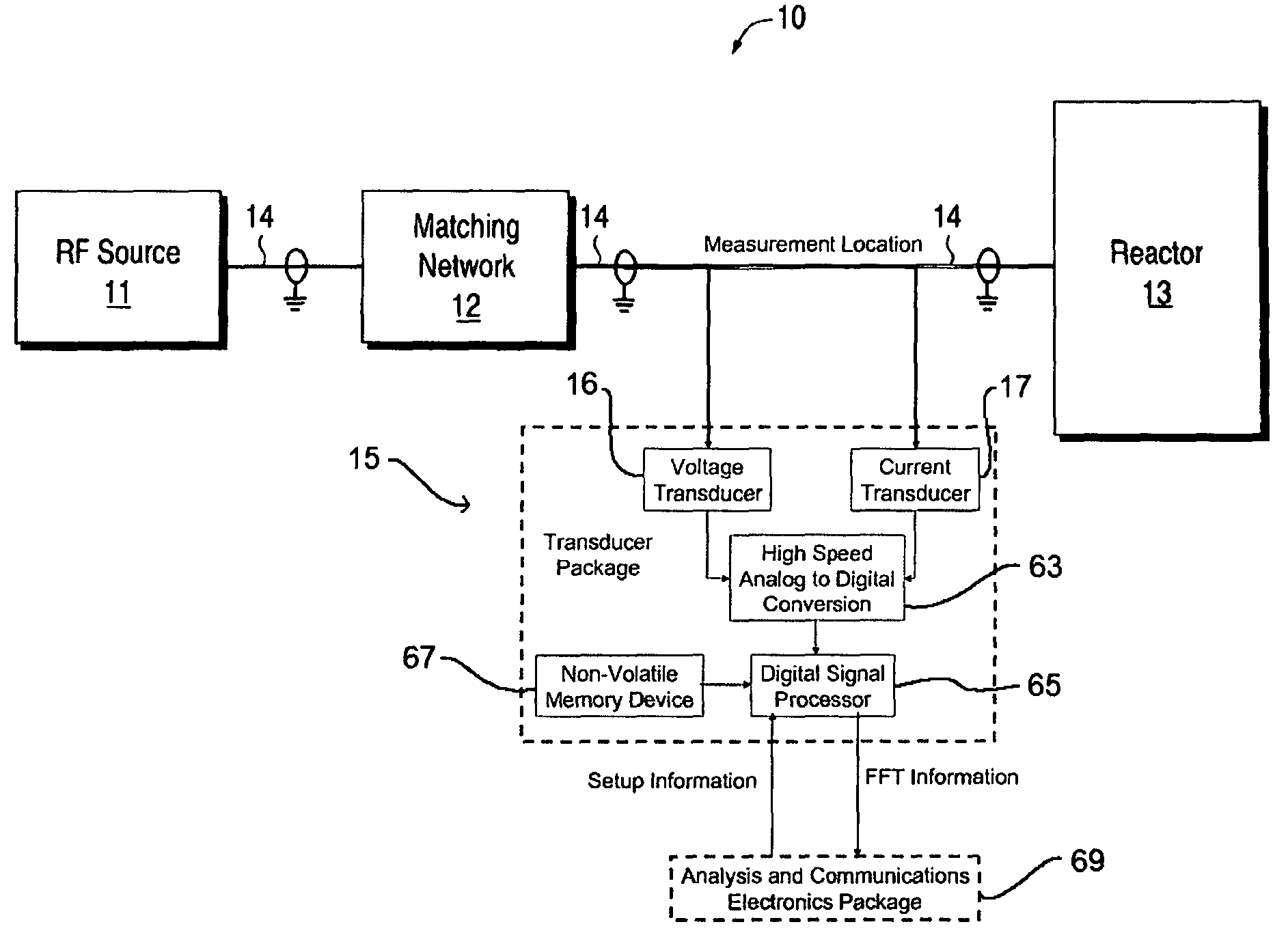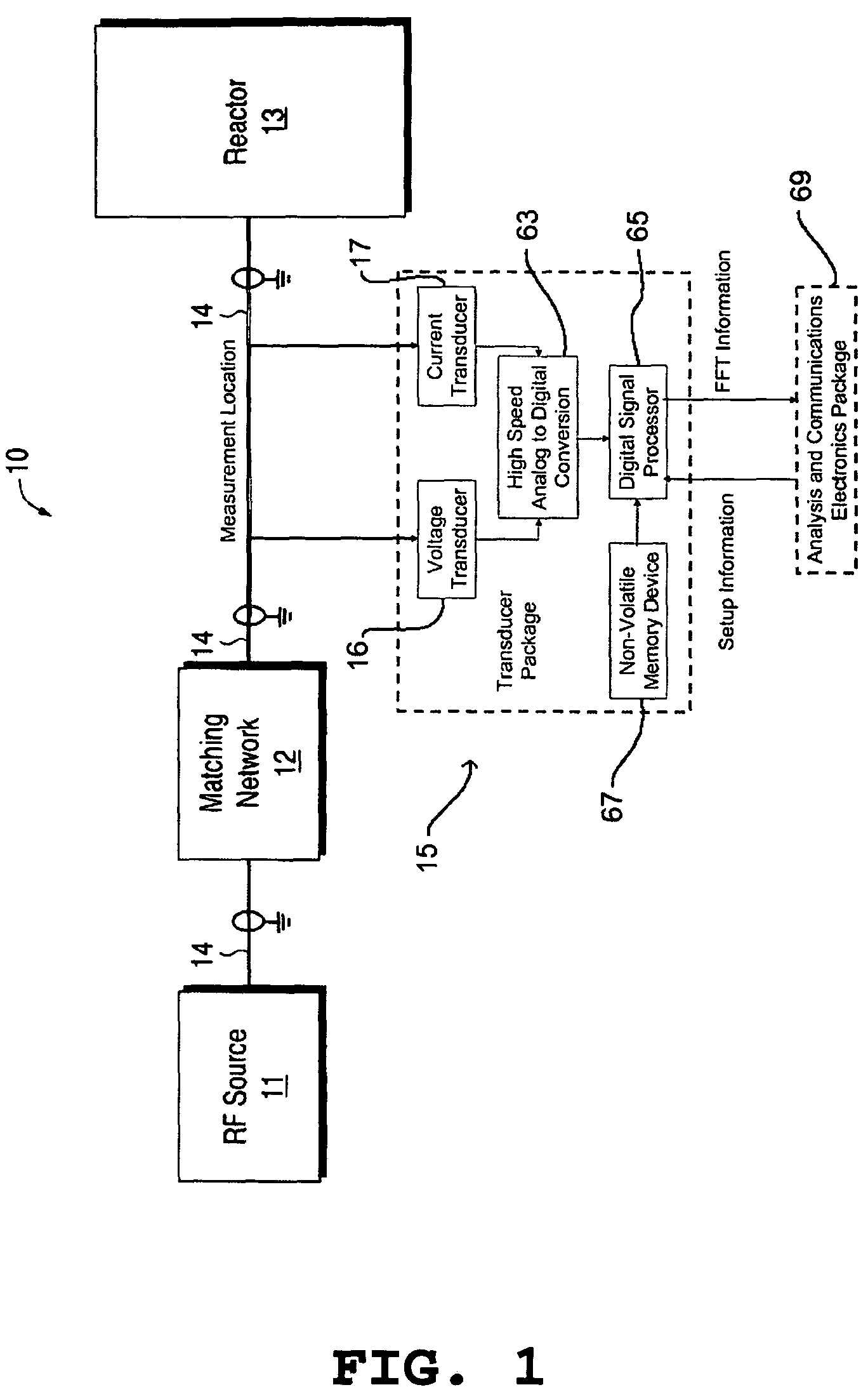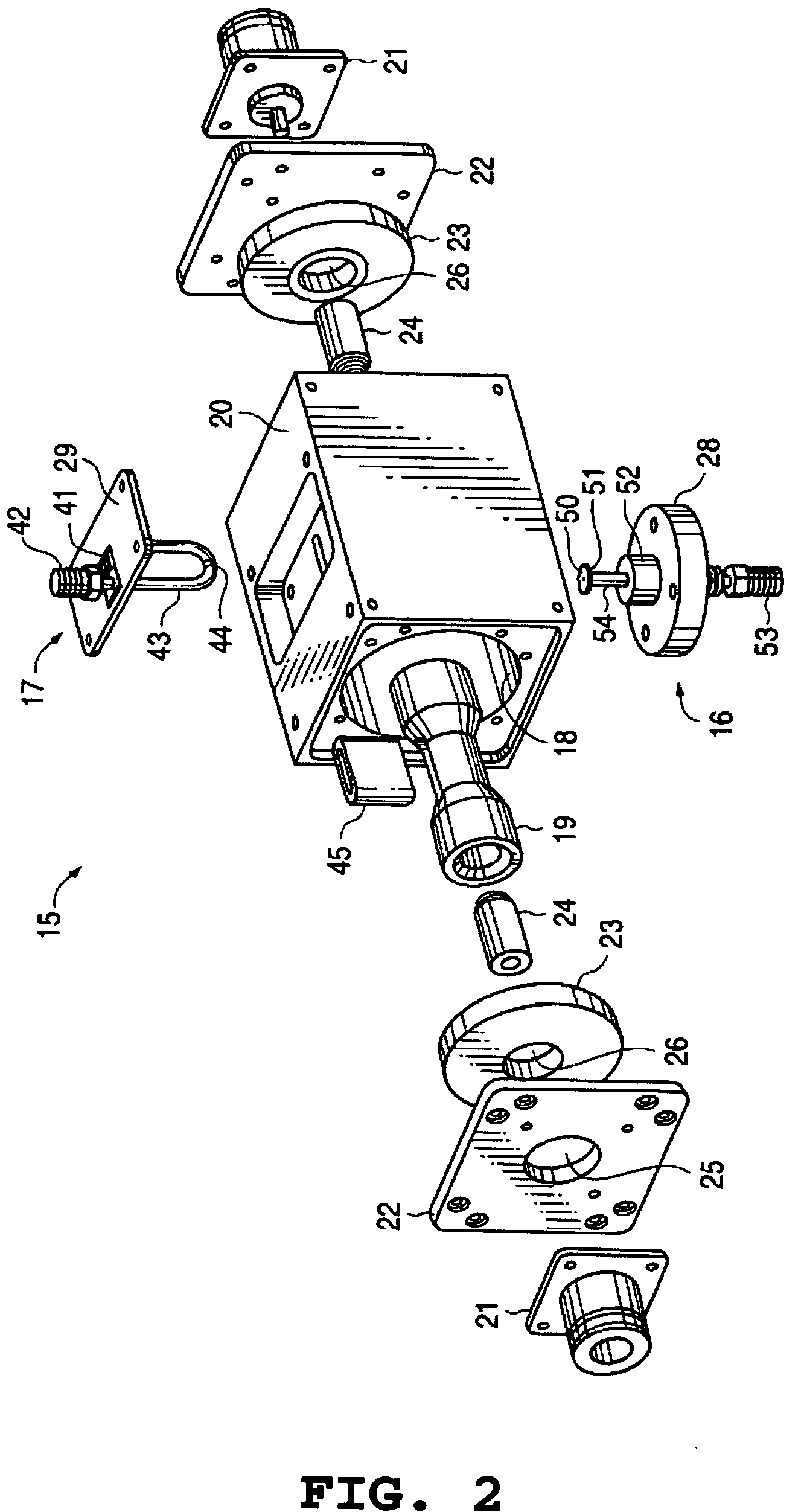Transducer package for process control
a technology of transducer and process control, which is applied in the direction of resistance/reactance/impedence, frequency selective voltage/current level measurement, instruments, etc., can solve the problem of wide-scale proliferation of this technology, the influence of load linearity, and the creation of prevalent harmonic distortion
- Summary
- Abstract
- Description
- Claims
- Application Information
AI Technical Summary
Benefits of technology
Problems solved by technology
Method used
Image
Examples
Embodiment Construction
[0051]Preferred embodiments of the present invention are illustrated in the FIGURES, like numerals being used to refer to like and corresponding parts of the various drawings.
1. RF SENSOR FOR PROCESS CONTROL
[0052]Referring to FIG. 1, a block diagram showing a utilization of an RF sensor in an RF controlled device made in accordance with the teachings herein is shown. In this exemplary system 10, an electrical source in the form of an RF generator 11 (RF source) is coupled to a processing reactor 13 through a matching network 12 by transmission line 14. The reactor 13 can be of a variety of reactors, such as a plasma reactor, for processing a variety of materials, including semiconductor wafers. Moreover, one skilled in the art will appreciate that a variety of processing systems utilizing electrical or microwave energy (including RF) sources are known to the art, and that any one of these systems, or various combinations of such systems, can be utilized in the practice of the teachi...
PUM
| Property | Measurement | Unit |
|---|---|---|
| Electric impedance | aaaaa | aaaaa |
| Electric potential / voltage | aaaaa | aaaaa |
| Efficiency | aaaaa | aaaaa |
Abstract
Description
Claims
Application Information
 Login to View More
Login to View More - R&D
- Intellectual Property
- Life Sciences
- Materials
- Tech Scout
- Unparalleled Data Quality
- Higher Quality Content
- 60% Fewer Hallucinations
Browse by: Latest US Patents, China's latest patents, Technical Efficacy Thesaurus, Application Domain, Technology Topic, Popular Technical Reports.
© 2025 PatSnap. All rights reserved.Legal|Privacy policy|Modern Slavery Act Transparency Statement|Sitemap|About US| Contact US: help@patsnap.com



